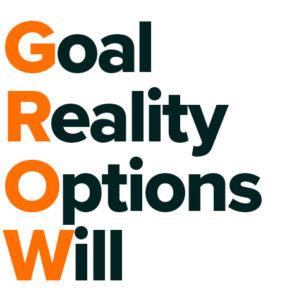You’ll never be able to avoid conflict completely.
That’s a fact of business and a fact of life — people will, at some point, have a problem with each other. It happens even in the best workplaces and in the happiest of marriages. It’s inevitable.
But how you react to conflict situations — that’s something that speaks volumes.
If your employee agrees to have a task completed by Wednesday and you still don’t have it by Friday, what do you do? Storm to their work area and demand they get it done immediately? Berate them for being incompetent? Stop trusting them with important tasks altogether?
There are two flaws with that approach. For one, you aren’t getting to the root of the problem. Two — and this is the kicker — it only increases tension and animosity. When you shift the focus from the problem to the person, you’re attacking their character. Now, not only is the problem unresolved, but you’ve also turned your employee against you.
When faced with conflict, I find that the GROW model is a very effective tool for getting everyone on the same page and working toward a well-defined solution. It’s a simple yet powerful framework for structuring meetings and conversations that require specific action steps.
The term GROW is an acronym that stands for:
Sometimes uncomfortable conversations need to happen in a one-on-one setting. Sometimes they need to happen with an entire team. Regardless of how many people are present, the GROW model can help uncover solutions in a constructive, non-threatening way.
Here’s how an actual GROW meeting transpired at my company with Kevin, Christian, Glenn, Pete, and Darrin:
“Okay guys, we need to have an uncomfortable conversation,” I began. “A customer called this morning. She was upset after watching one of our new online courses that we just published. She said she could barely understand the instructor’s narration, and after watching it, I agree — we have to do better. Everyone in this room had a hand in creating that course from start to finish.”
No one said anything, so I continued. “Let’s figure out how to resolve this and make sure it doesn’t happen again in the future.”
I got up, went to the white board and wrote the letters GROW down the left side of the whiteboard…
What is the goal?
Next to the G, I wrote the goal: “We produce high-quality video content with clear audio and video.”
It’s important to define the overall goal that this meeting should help produce. This will help focus the discussion, and keep things from going off-track.
What is the current reality?
Once I had established the goal of the meeting, the next step was to write the current reality next to the R: “The new course we released contains several spots where the instructor’s voice is barely audible.”
This is an important step in the GROW meeting — you look at the current reality, compare that to your intended goal, and then chart a course to get from Point A to Point B. When done appropriately, this takes the emotional element out of the equation by focusing on the problem rather than the people in the room.
What are our options?
Once we had defined the goal and the reality, I turned to face the group. “Okay, so what are our options?”
After a moment, Darrin broke the silence. “I’m sorry guys,” she said. “I should’ve caught that.”
“We’re all responsible,” Christian said. “I remember that course. We had multiple issues with the content, and required the author to make several rounds of revisions. I could tell that his revisions still weren’t great, but I knew it would take even longer to get him to re-record stuff. So I let it go through anyway.”
“This isn’t about assigning blame. What’s done is done.” I moved the conversation along, “Tell me about what options we can use to move forward.”
I could see the gears start turning as everyone focused on solving the problem. Within a few moments, this went from an uncomfortable conversation about dropping the ball on one course to a chance to solve a problem and improve the quality of all our courses. Everyone in the room offered ideas. I wrote the options on the whiteboard as the team thought of them.
What will we do, and by when?
“Great,” I said, looking at the list of potential options. “Now what will we do, and by when?”
Everyone jumped on specific action items. Kevin would call the author and ask him to re-record as soon as we got out of the meeting. Glenn would work with the production team next week to build a long-term solution for our internal tools to flag a course as being error-prone. By tomorrow, Christian would notify Pete in quality assurance about which videos needed a lot of edits, so Pete could watch for similar issues in the future. Finally, by the end of the week, Darrin would build a process for everyone using our back-end software, so each course had someone accountable for it and communication could be clearer across the teams.
The whole meeting took about half an hour, and not only was the course updated within a week, but we had new processes in place to keep similar issues from happening in the future.
Now imagine if I barged into the meeting with guns blazing: “Who’s fault is this!? You don’t know how to do your shit! Why can’t you do your damn job!?” Immediately, everyone would be on the defensive. Stress levels go through the roof, we couldn’t focus on finding solutions and I would have destroyed any professional credibility I had with my team.
This is important: as the boss, I could have easily walked into the meeting room, ordered the team to take certain actions, and warned that this problem had better not ever happen again. But I laid out the parameters — the business reality — and then let them come up with a solution that worked. That way, my team owned the solution and committed themselves to living up to the expectations they had set.
Once I began following this system, my executive team began using it with their teams. Eventually even coworkers used it to solve problems between each other. The transformation fascinated me: conversations that could have easily resulted in people holding grudges for days — if not years — went off without a hitch.
People came to understand that the whole point of a GROW meeting was simply finding solutions to a problem. No finger-pointing. No mud-slinging. No hard feelings afterward. It was just another one of those things that made our tribe magical.








Very good lesson and article.